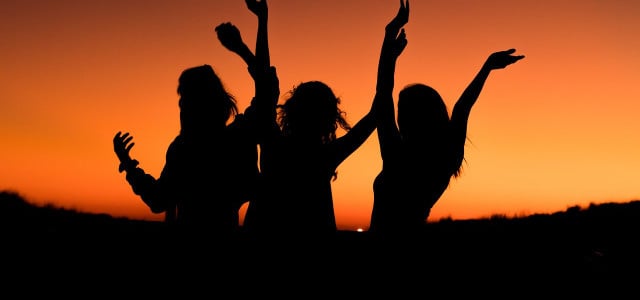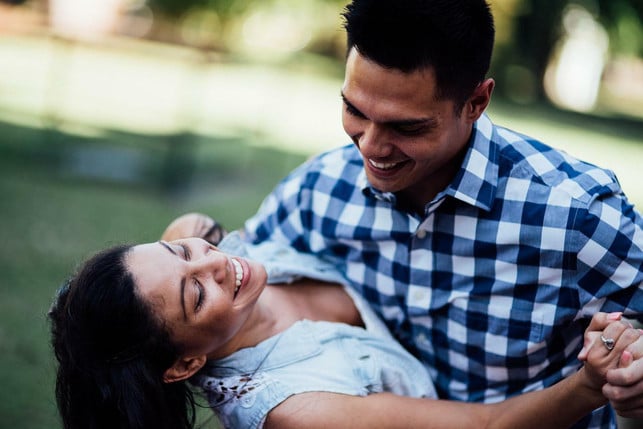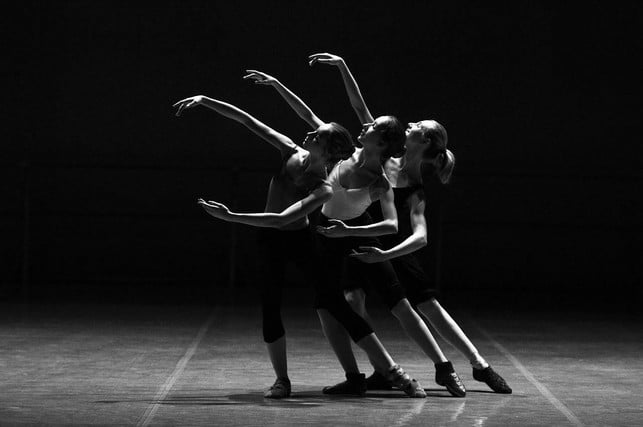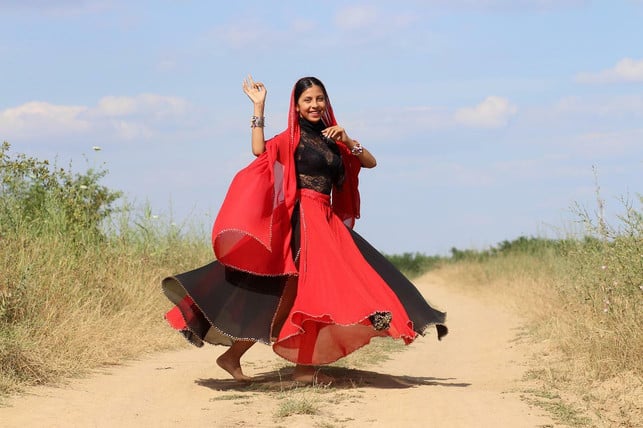
Numerous scientific studies show that dancing can make you happy. You can find out why the rhythmic movement is so good at us here.
Dancing lies in our blood – even babies who are just five months old, according to a study from 2010, start adapting their movements to the rhythm of music. And apparently not without reason: the California Berkeley University sees dancing an activity that has a lasting positive effect on our health. Because when we dance we move our body, listen to music and can build connections to our fellow human beings.
Dancing makes you happy: This is how it increases our well -being

Numerous studies now show that dancing makes you happy:
- According to a British study from 2014, participants felt more comfortable, more energetic in the inside after eight to ten weeks after eight to ten weeks and had gained new friends through dancing. Many stated that they felt fit and healthy by dancing and could express themselves creatively.
- Another study from 2004 examined the effects of African dances. The result: Dancing helped the subject: to reduce the inside, stress and negative emotions and at the same time increased positive emotions.
- According to the Berkeley University, a study from 2009 shows that it is not just about moving itself. The results show that dancing primarily triggers positive emotions when we dance with partners: in and music.
But why does dancing make us happy? According to the AOK, this is due to processes that run in our brain in the meantime. This is how dancing causes our body to release the happiness hormones dopamine and endorphin. This is also the case with other sports. When dancing, however, there is music that can also reduce the stress hormone cortisol in our body. In addition, dancing focuses more on promoting interpersonal connections.
Dancing makes you happy: this is how it promotes connection

Body contact often plays an important role in dancing. In addition, dancing requires that we perceive our counterpart exactly and synchronize our movements accordingly. A 2016 study showed that we feel closer and more connected to other people. The researchers come to the conclusion that dancing has always been an important means to promote social connection between strangers.
Dancing is also an important cultural asset, especially for many indigenous population groups, because it embodies values such as solidarity, humility and connection to nature.
Dance as a remedy
Some studies come to the conclusion that dancing not only makes you happy, but even an efficient remedy for depression could be:
- A 2012 study examined how a 90-minute tango course had a depressive patient: inside. The result: The dance course acted like a meditation course and was able to relieve the depression and reduce the stress level.
- According to investigations, specially developed dance therapy (known as “Dance Movement Therapy”) should not only help against depression, but also against other psychological complaints such as panic attacks, trauma or chronic pain.
- A 2007 study shows that people who suffer from depression after a few minutes less anxious, tired, tense and without drive felt. Instead, well -being, energy and mental strength increased. The subject: inside danced into a particularly happy, quick song and held on their hands when dancing.
Dancing in old age: that’s why it is important

The Berkeley University emphasizes how dancing can make you happy even in old age. Dancing has advantages, especially for older people. So it should be able to help with many complaints and phenomena that develop in old age, for example with coordination problems, loneliness and dwindling physical health. This is also evidenced by scientific knowledge:
- A study from 2007 examined how different dance types had 60 pensioners: inside in Brazil. The subject: Inside, dance courses took over one year. They reported that dancing helped them during this period to improve balance, stretching and coordination. They also felt more relaxed and connected to the Brazilian culture after the courses.
- A typical clinical picture that increasingly limits everyday life from older people is dementia. Dancing could also help. A 2012 study shows that dance courses in dementia can improve health, energy levels, memory and interpersonal bonds. In addition, the subject could concentrate better. The mood also improved due to dancing.
- Dancing should also promote the formation of new nerve cells and can therefore prevent dementia. The risk of developing dementia by regular dancing can be reduced by up to 20 percent.
Dancing makes you happy and is climate -friendly

So there is numerous indications that dancing makes you happy because it is good for body and mind and strengthens our mental health. At the same time, dancing is particularly accessible. Because you don’t need expensive aids and don’t even have to go to a special place. You can just turn up the music and start dancing in the kitchen, living room or bedroom. For a little more instructions, you can also find out dance videos on YouTube and other platforms.
This means that electricity is only necessary for the music or playing the video. Otherwise you do not use resources, which makes dancing not only a health -promoting but also climate -friendly hobby. If you want to attend dance courses, we recommend that you travel the way there by bike or public transport.
Even if dancing is (almost) free at home and does not require a special equipment, it is still not (yet) not an inclusive sport. Because for people who sit in a wheelchair, for example, it is still difficult to find dance courses that are geared to their needs or to get to clubs at night. Some dance schools are already positive in this regard. In the Münster residence, for example, there are, including dance groups, where people with and without handicap can dance together.
Revised by Paula Boslau
Read more on utopia.de:
- Inclusion: What does that mean?
- Headache after sport: causes and what helps against it
- Losing weight with sport: suitable sports and tips
** marked with ** or orange underlined Links to sources of supply are partially partner links: If you buy here, you will actively support Techzle\.com, because we will then receive a small part of the sales proceeds. More information.